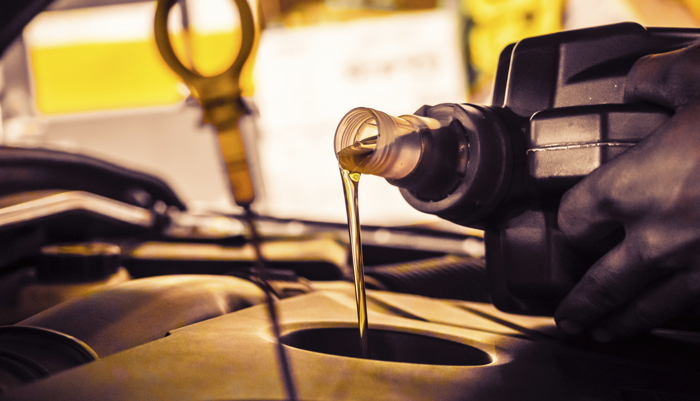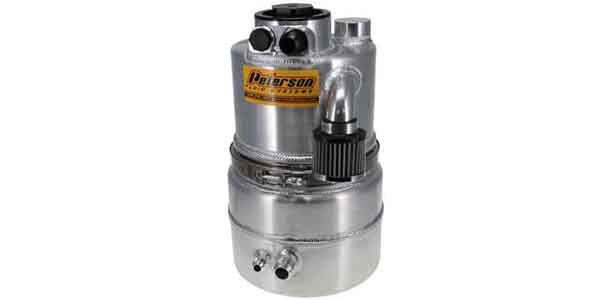Boy, has life ever gotten complicated! Back in the late ’60s and early ’70s when Jim Kirby, Mike Kausch and I were racing fueler Chevy funny cars, there were only about six American racing oils on the market.
Three were produced by major oil companies (Pennzoil, Quaker State and Valvoline), and three were produced by smaller companies (DA Speed Sport, Kendall GT-1 and Torco). Of these companies only Pennzoil, Quaker State and Valvoline still survive as they did. Pennzoil and Quaker State are now owned by Shell, and Shell also now has a racing oil. Kendall is now part of ConocoPhillips, Torco is in the process of reinventing itself , and DA no longer produces pure racing oils.
These older racing oils were strictly for racing. All of these oils were “arm-chair” formulations, which means they were basically high-quality passenger car engine oils plus extra zinc dithiophosphate (ZDP or ZDDP). Since even our funny cars had a maximum of 0.600˝ lift at the valve and very long durations, these formulations were adequate. No testing was performed, because engine oil dynamometer testing was too expensive for such a small market.
This kind of thinking continued though until the 1990s, when two well-financed NASCAR teams began conducting engine oil dynamometer testing. The first team was looking to solve the old small block Chevy overheating problems associated with having the center exhaust ports adjacent to each other. We solved the problem and developed formulations which were more than adequate through extensive dyno testing.
When the second team found out how much difference changes in oil formulations could make, I was invited to meet with their head engine builder. He asked if we could develop oils which would produce more horsepower, and I said I thought so, but dyno testing would tell us if our theories were correct. It turns out they were, and the racing oil industry had a rebirth.
Now we have break-in oils, high-performance oils, hot rod oils, and turbo oils in addition to traditional racing oils, each developed to be very application specific. In fact, on Summit Racing’s website I found 1,110 “high performance oils” and 300 of them had the extra ZDP we associate with higher performance oils. There were 23 different suppliers listed on Summit’s website.
So how in the world is the average guy supposed to understand all this new complexity? Let me try to explain some of the terminology and give you a little guidance to help your engine oil selection process.
First, let’s explain what some of the terms mean (or should mean):
Racing Oil – A true racing oil is typically a full synthetic with high ZDP and antioxidant levels to provide sufficient engine protection while optimizing horsepower at high BMEP (brake mean effective horsepower) levels.
These oils are not streetable since they contain lower concentrations of several additives to reduce frictional drag.
High Performance Oil – Is generally a streetable oil with adequate detergency and dispersancy to protect the engine throughout a typical oil change internal plus extra ZDP to protect valve train pieces with higher lift cams and stiffer valve springs. This term is often misused like the term “natural” is for food products.
Hot Rod Oil – Very similar to true high performance oils, but the better products include vapor phase rust inhibitors to prevent component rusting during longer-term storage. There are both mineral oil and synthetic products.
Turbo Oils – Are designed with extra oxidation inhibition to protect the oil against degradation at higher engine oil temperatures. ZDP content may not be sufficient for very high lift cams. These oils are generally developed to meet OEM requirements for smaller turbocharged engines.
Fuel Racing Oils – Racing oils developed for use with methanol or nitromethane must be specially formulated. These aggressive fuels will completely break down the dispersants and improvers used in more typical oil formulations. They are also usually very viscous. NOT streetable oils!
Break-In-Oils – As one engine builder told me, you need to seat the rings immediately and completely to maximize the engine’s ultimate power potential, whether it is a racing engine or a street engine. We developed break-in oils to protect high performance valve trains, yet allow more accelerated ring and cylinder wear during break-in.
Having said all these words about oil types, let me warn you about oil marketers. Many oil marketers, because it is a highly competitive business, will say anything to sell their products. One oil I saw had “high performance oil” and “break-in oil” on the same container. It should be one or the other.
Many smaller marketers have no test data to support their marketing claims, just like in the old days. Now, I agree most oil failures are due to lack of oil, not poor oil quality, but this is not the optimum choice if you are buying these products for your expensive racing engines.
Of course, if a sugar daddy is giving you free oil, you may have to reconsider what is technically correct and balance that against what is financially expedient. I understand; I used to race. There’s no substitute for cubic dollars!
Interestingly, some oils show the API starburst symbol on the containers and claim API service level SN for the product. If this is true, then that oil can’t contain more than 0.08% wt. phosphorus by specification. This means these oils will not protect a valve train with a high-lift aftermarket cam and stiffer valve springs. You don’t want an API-certified oil with significantly stiffer valve springs.
Several smaller oil marketers have tried to convince me that they were sufficiently technically proficient to design their own high-performance products without technical assistance from additive suppliers. I’ve been involved with racing oils and racing oil chemistry since the late ’60s, and I know that I’m not sufficiently proficient. I’m certain that they aren’t either. Why do additive suppliers employ many scientists and spend millions of dollars on testing if it isn’t necessary? These snake oil “witches brews” aren’t backed by scientific principles or data. Stay away from them unless you want to be disappointed or they want to sponsor your car for big bucks.
Again, I need to caution you about the use of the terms “partial” or “para” synthetic and synthetic blend. Since there is no industry excepted definition of a partial synthetic oil, marketers can sell you an oil containing between 1% and 99% synthetic base stocks. Want to guess which way they will go, knowing that synthetic base stocks are 3-4 times as expensive as mineral oil stocks?
My point to all this is that you now have many choices when purchasing high performance engine oils, so you must very carefully read all the information about the oil, not just the label, to select the right oil for your engines. I hope I’ve been able to help you a little bit. Good luck!















